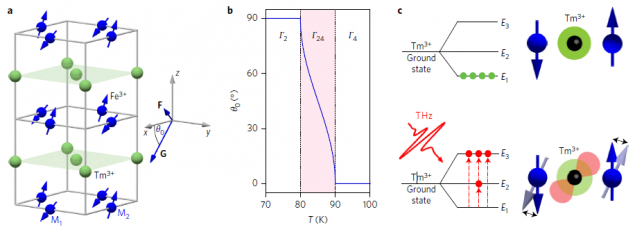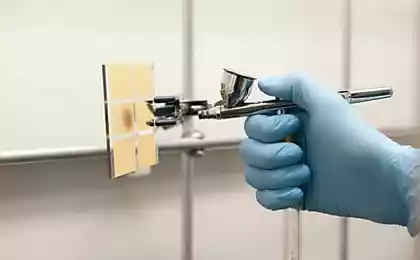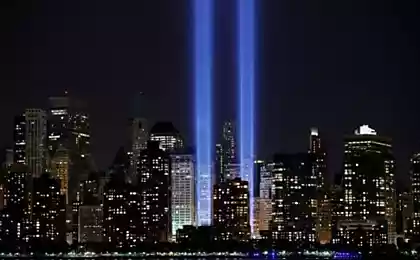483
The magnetic memory of the future. Terahertz radiation used for ultrafast overwrite spins
Eighty six million two hundred eighty thousand fifty one
Ultrafast manipulation of the magnetization of materials is a cornerstone of modern Photonics. In the future such technologies may find use in optical computers and teragertsovogo electronics. In recent years, made a number of successful experiments in this field. Among them the change back in antiferromagnets under the influence of light a few picoseconds, the control of the oscillations of the magnetic moments of the antiferromagnet with a pair of femtosecond lasers, the phase transition from the ferromagnet to the antiferromagnet under the influence of light during femtoseconds, etc. Despite the remarkable progress in this area, in the experiments a large part of light energy is not involved directly in the interaction of light with magnetized material. This means that in practice will require considerable effort on the extraction of energy.
A team of Dutch, German and Russian scientists from the Institute of General physics. Prokhorov RAS, Moscow technical University (MIREA) and MIPT have developed much more effective and practical method of ultrafast control of magnetization of a material. Instead of visible and infrared light they used electromagnetic pulses of terahertz radiation. Thus, the scientists propose to use to overwrite in the computer memory of the future not laser pulses, and T-beams.
Terahertz radiation — electromagnetic radiation spectrum which lies between infrared and microwave range with wavelengths from 1 to 0.1 mm. T-rays easily pass through most insulators, but well-recognized conductive materials (metals) and are absorbed by many liquids (water).
Experiments on the control of magnetization with the help of THz pulses was conducted before, but there are involved other mechanisms of interaction. Russian physicists have proposed a conceptually new universal mechanism.
The fact that the strength and direction of the magnetic anisotropy in virtually all materials is determined by the orbital pairing state of electrons with ordered spin States. Therefore, an ultrashort pulse of an electric field, dramatically changing orbital States of electrons, can lead to a sudden change in the magnetic anisotropy. The scientists collected the experimental setup and tested the theory that a change in the magnetic anisotropy leads to oscillations of the magnons with large amplitudes, which are quadratically dependent on the strength of the terahertz field.
Magnon is a quasiparticle, corresponding to the elementary excitation of a system of interacting spins. So the individual particles don't actually exist in itself, but the use of this concept greatly simplifies the description of the process that in reality occurs at a quantum level.
The research write that in the terahertz spectral range this concept (controlled change in the magnetic anisotropy and magnetization) can be applied to any material in which changes in the electronic orbitals lead to a change in the magnetic anisotropy. For example, different oxides with ions 3d and 4f. Among them — a variety of orthoferrites, manganites and have been, as well as various compounds of 3d ions, such as hematite α-Fe2O3
To the Russian-German experiment similar properties of terahertz radiation remained, by and large, unexplored.
The fundamental idea shown in the illustration. For experience used the antiferromagnet TmFeO3 — orthoferrite Tullius. This material kristallizuetsya in deformed perovskite structure.

The experiment showed that the beams of T-rays very efficiently from the point of view of energy consumption change of the magnetic properties and iron ions and ions of thulium.

"We took an important step on the way to terahertz electronics: showed qualitatively new approach to the control of magnetization by using short pulses of terahertz radiation. As far as we know, our work is the first example of this application of T-rays," said Anatoly Zvezdin Moscow Institute of physics and technology in Dolgoprudny.
According to experts, in the optical computers of terahertz radiation are appropriate for ultra-fast transmission of information, recording information on magnetic media, etc. in addition, T-rays can be used for monitoring living cells in real time and many other purposes.
Anatoly Zvezdin noted that these experiments are a continuation of the research that led Soviet scientists at the Moscow state University: "Soviet orthoferrite researched group at MSU, and we had the priority in this area. In some sense, our work is the continuation of the research," he said.
Scientific work published October 3, 2016 in the journal Nature (doi: 10.1038/nphoton.2016.181).
https://www.slideshare.net/slideshow/embed_code/key/zb1G3n47I771nY
Source: geektimes.ru/post/281436/
Ultrafast manipulation of the magnetization of materials is a cornerstone of modern Photonics. In the future such technologies may find use in optical computers and teragertsovogo electronics. In recent years, made a number of successful experiments in this field. Among them the change back in antiferromagnets under the influence of light a few picoseconds, the control of the oscillations of the magnetic moments of the antiferromagnet with a pair of femtosecond lasers, the phase transition from the ferromagnet to the antiferromagnet under the influence of light during femtoseconds, etc. Despite the remarkable progress in this area, in the experiments a large part of light energy is not involved directly in the interaction of light with magnetized material. This means that in practice will require considerable effort on the extraction of energy.
A team of Dutch, German and Russian scientists from the Institute of General physics. Prokhorov RAS, Moscow technical University (MIREA) and MIPT have developed much more effective and practical method of ultrafast control of magnetization of a material. Instead of visible and infrared light they used electromagnetic pulses of terahertz radiation. Thus, the scientists propose to use to overwrite in the computer memory of the future not laser pulses, and T-beams.
Terahertz radiation — electromagnetic radiation spectrum which lies between infrared and microwave range with wavelengths from 1 to 0.1 mm. T-rays easily pass through most insulators, but well-recognized conductive materials (metals) and are absorbed by many liquids (water).
Experiments on the control of magnetization with the help of THz pulses was conducted before, but there are involved other mechanisms of interaction. Russian physicists have proposed a conceptually new universal mechanism.
The fact that the strength and direction of the magnetic anisotropy in virtually all materials is determined by the orbital pairing state of electrons with ordered spin States. Therefore, an ultrashort pulse of an electric field, dramatically changing orbital States of electrons, can lead to a sudden change in the magnetic anisotropy. The scientists collected the experimental setup and tested the theory that a change in the magnetic anisotropy leads to oscillations of the magnons with large amplitudes, which are quadratically dependent on the strength of the terahertz field.
Magnon is a quasiparticle, corresponding to the elementary excitation of a system of interacting spins. So the individual particles don't actually exist in itself, but the use of this concept greatly simplifies the description of the process that in reality occurs at a quantum level.
The research write that in the terahertz spectral range this concept (controlled change in the magnetic anisotropy and magnetization) can be applied to any material in which changes in the electronic orbitals lead to a change in the magnetic anisotropy. For example, different oxides with ions 3d and 4f. Among them — a variety of orthoferrites, manganites and have been, as well as various compounds of 3d ions, such as hematite α-Fe2O3
To the Russian-German experiment similar properties of terahertz radiation remained, by and large, unexplored.
The fundamental idea shown in the illustration. For experience used the antiferromagnet TmFeO3 — orthoferrite Tullius. This material kristallizuetsya in deformed perovskite structure.

The experiment showed that the beams of T-rays very efficiently from the point of view of energy consumption change of the magnetic properties and iron ions and ions of thulium.

"We took an important step on the way to terahertz electronics: showed qualitatively new approach to the control of magnetization by using short pulses of terahertz radiation. As far as we know, our work is the first example of this application of T-rays," said Anatoly Zvezdin Moscow Institute of physics and technology in Dolgoprudny.
According to experts, in the optical computers of terahertz radiation are appropriate for ultra-fast transmission of information, recording information on magnetic media, etc. in addition, T-rays can be used for monitoring living cells in real time and many other purposes.
Anatoly Zvezdin noted that these experiments are a continuation of the research that led Soviet scientists at the Moscow state University: "Soviet orthoferrite researched group at MSU, and we had the priority in this area. In some sense, our work is the continuation of the research," he said.
Scientific work published October 3, 2016 in the journal Nature (doi: 10.1038/nphoton.2016.181).
https://www.slideshare.net/slideshow/embed_code/key/zb1G3n47I771nY
Source: geektimes.ru/post/281436/
Movies and reality: how the lumière brothers first have erased that line?
VIP apartment for connoisseurs of luxury























